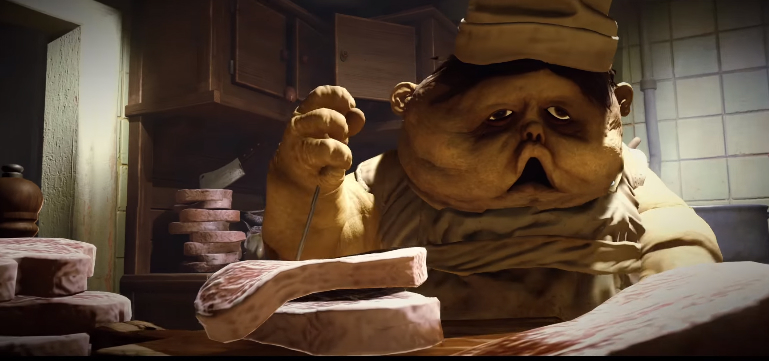Our Verdict
An okay platformer but a deeply imaginative horror game, Little Nightmares is worth playing for its array of disturbing imagery.
PC Gamer's got your back
What is it? Side-scrolling horror platformer set on a watery prison.
Expect to pay £16/$20
Developer Tarsier Studios
Publisher Namco Bandai
Reviewed on Intel I5 4460@3.20GHz, 8GB RAM, Nvidia GeForce GTX 780
Multiplayer None
Link Official site
Buy it Humble Store
Read our affiliates policy.
The Bad Things Happen To Small Children sub-genre is currently in a period of growth. Following last year's inventively bleak Inside, Little Nightmares similarly presents a young protagonist being killed over and over again by monsters and environmental hazards against a grim backdrop. Even that young chap in the upcoming Rime is being harassed by a gigantic bird. These kids just can't catch a break.
Playing as a child evokes a natural sense of helplessness, of course, which is particularly useful in a horror game. In Little Nightmares, you play a small girl called Six who's trapped on The Maw, a gigantic vessel of damned souls, where everyone is clamouring desperately for their next meal—including you. Tarsier previously worked on PlayStation's LittleBigPlanet series, and a lot of that platformer-puzzler DNA carries across. This is a side-scroller, but you move around in a 3D space, pulling objects around to help you reach switches or new areas. There's a heavy stealth element, too, with Six having to evade the creatures that occupy different areas of the vessel. The Maw is an impressively detailed horror locale, and I love Little Nightmares' storybook-y visual style—every object is perfectly modelled and lit to befit that.
The vessel is divided into five sections, each with a theme, including a toy room, a kitchen and guest quarters, with a monster type to match. The toy room, the game's second chapter, has these freakishly long-armed and blind janitors, who respond only to the sounds that Six makes when walking on creaky surfaces. They're probably the scariest in the game, and you can throw smashable objects to send them scuttling off in other directions in order to sneak past, a little like the claw guys who chased the sounds of bells in Resident Evil 4. These sequences are the most tense and imaginative in the game, meaning I was left with a slight feeling that Little Nightmares peaked too early.

A sequence where you operate a meat grinder in The Maw's kitchen may put meat eaters off sausages for several months.
The kitchen, meanwhile, features the grotesque chefs. Imagine if the victim of the gluttony sin in David Fincher's Seven managed to secure regular work in a filthy diner, and you're pretty much there: he's a gross, unsettling and heavy-breathing creature that does a creepy high-pitched yelp when Six is spotted. I'll leave the rest of Six's pursuers for you to discover. The art style made me expect Tim Burton-y things from Little Nightmares' presentation, but thankfully it's several degrees stranger than that.
I'm wary of dwelling too much on the similarities between the games, but I couldn't stop thinking about Inside while playing Little Nightmares. I don't consider this a bad thing, nor are they even close to being identical—I actually think they're perfect companion pieces. Both are horror-themed, side-scrolling platformers featuring a young protagonist in cruel surroundings, with little in the way of explanation. The chances are they share some influences, but they're much further removed from each other than it may seem from these screenshots, both in design—stealth is as important here as the platforming—and tone. If Inside depicted a horrific version of reality, this is more otherworldly, like a dark, contemporary fairytale, and it even offers fleeting moments of light relief, which Inside did not. As the name 'Little Nightmares' suggests, this is something that a troubled child has the capacity to dream up.
Like Inside, then, I enjoyed the world of Little Nightmares more than the game itself, which is impressively varied in the way environments are themed, but a pretty standard platformer. I also didn't have loads of fun navigating the game's stealth systems—the parameters of how you get caught by the patrolling monsters is clear most of the time, but it occasionally feels arbitrary when you're spotted and chased. Likewise, when the chefs see Six and come chasing after her, they seem to have scripted and basic search patterns, which meant I stopped finding them threatening after a while.
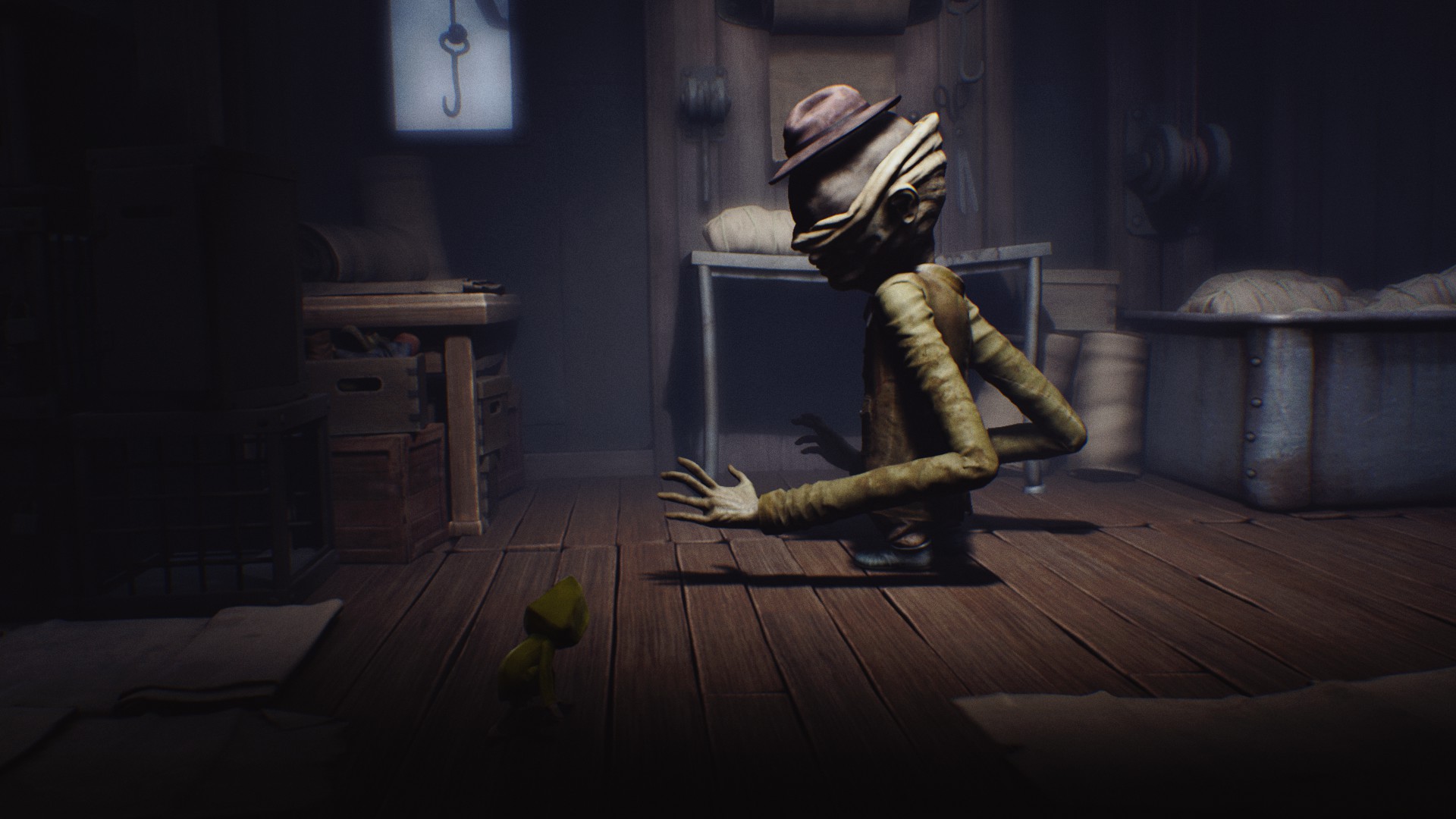
I didn't find Little Nightmares particularly scary either, but that's okay. It's consistently tense, atmospheric and disgusting, which is just as good for me. The kitchen area is smeared with blood and packed with filthy-looking meats and dirty plates, leaving the general impression that the place probably wouldn't survive a hygiene inspection. Just a warning for the meat eaters reading this: a sequence where you operate a meat grinder in The Maw's kitchen may put you off sausages for several months. Then again, perhaps it won't. I genuinely came out of that part of the game hankering for a sausage sandwich.
The game's five hours are well-paced and relatively free of repetition, but I won't play Little Nightmares again, even knowing there are collectables and hidden areas on the ship to find. This is a terrific world to step into and then out of again, a rush of original and disconcerting imagery slotted into an eerie, isolated setting. I want to preserve that effect it had on me the first time, of underestimating the oddities that the developers had in store. This is a horror game that genuinely has new things to show you.
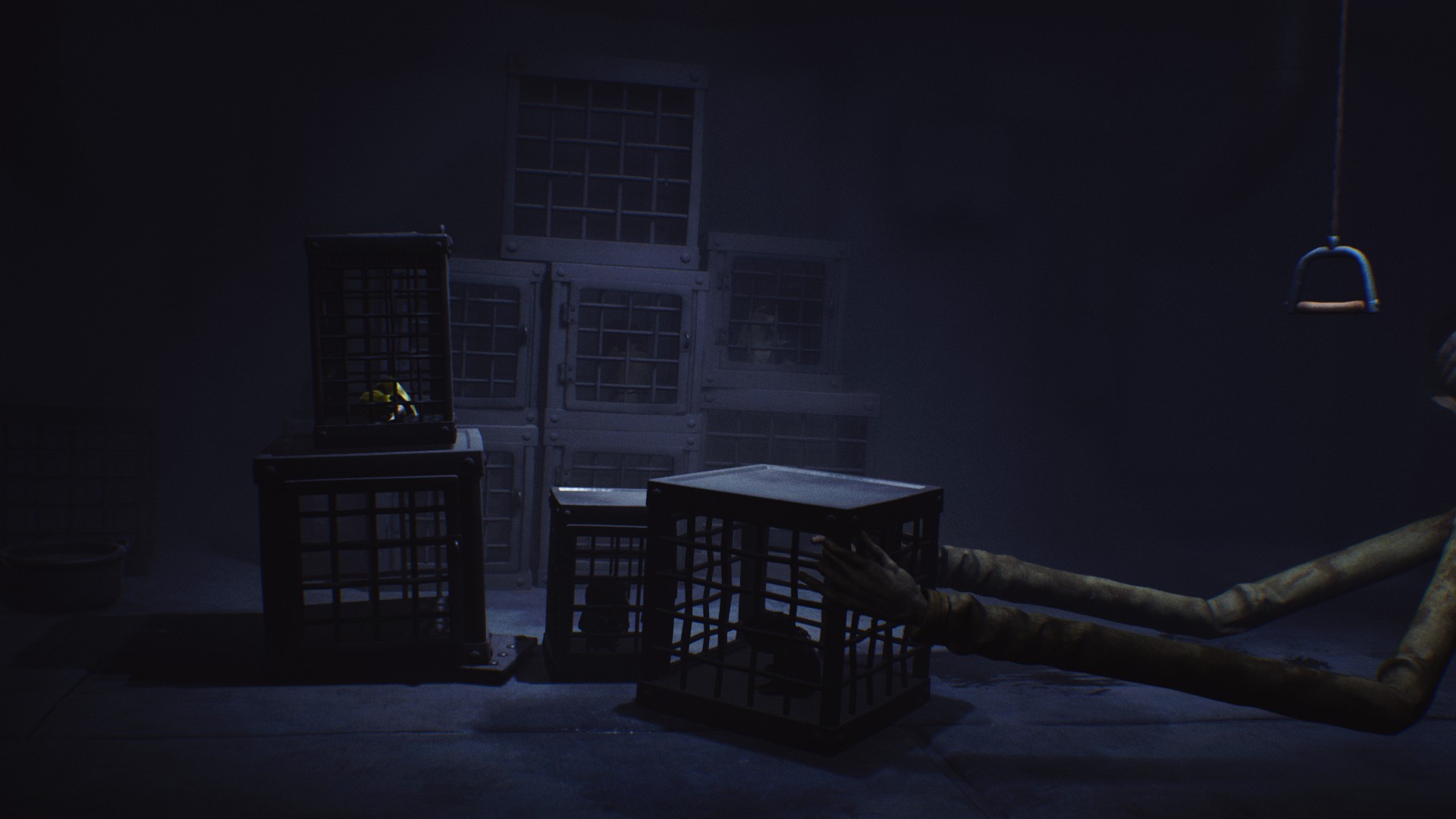
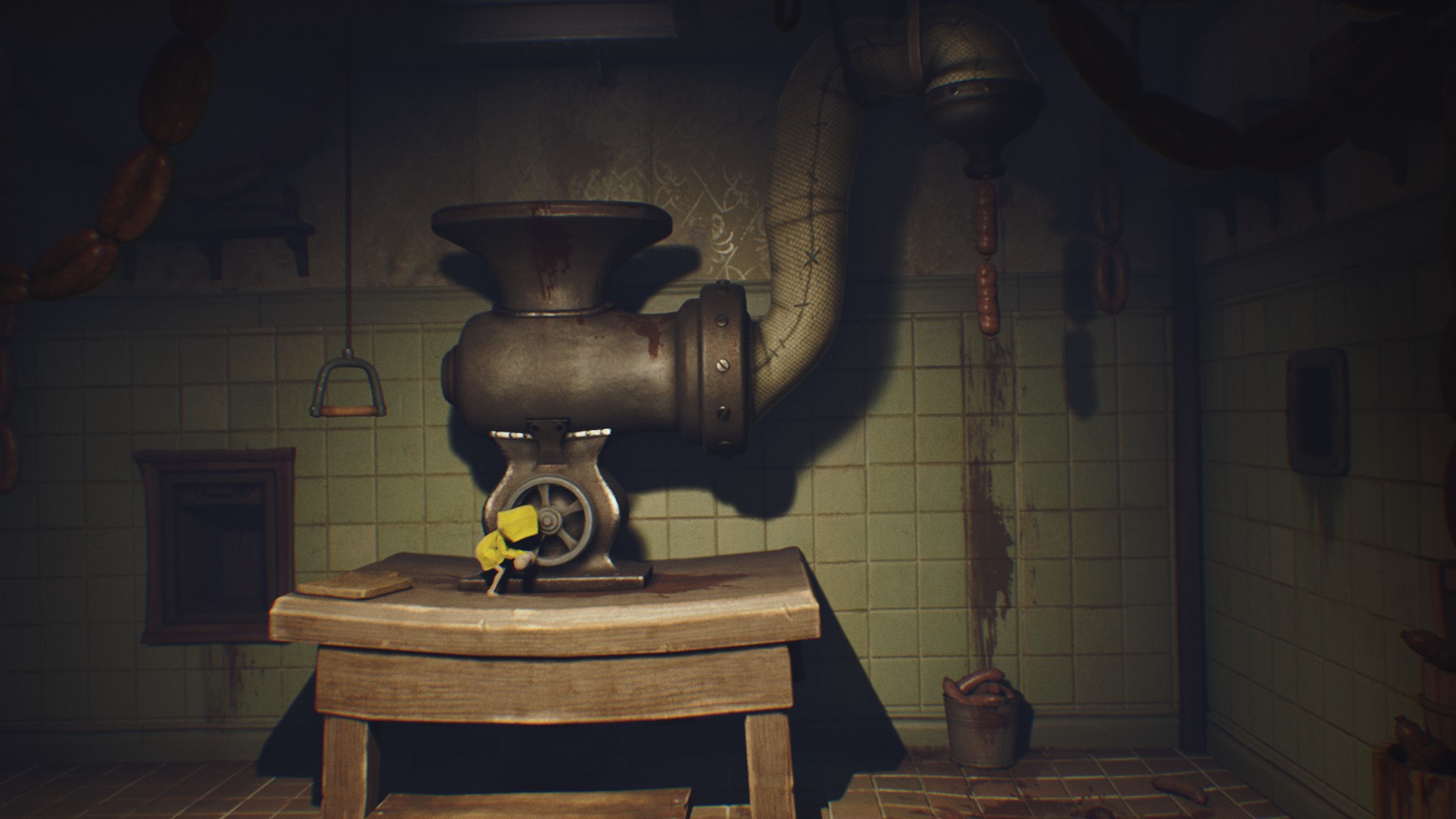
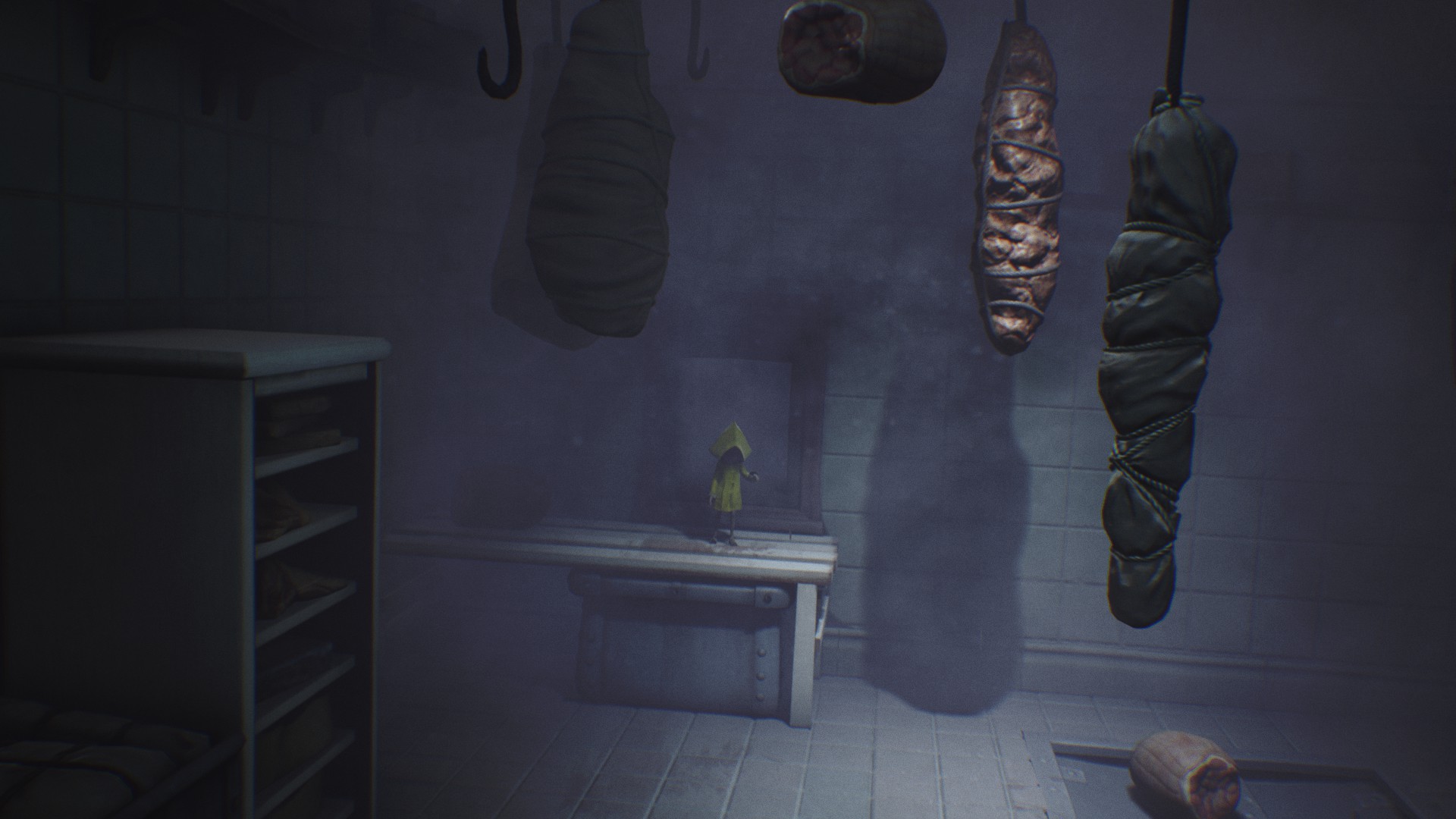
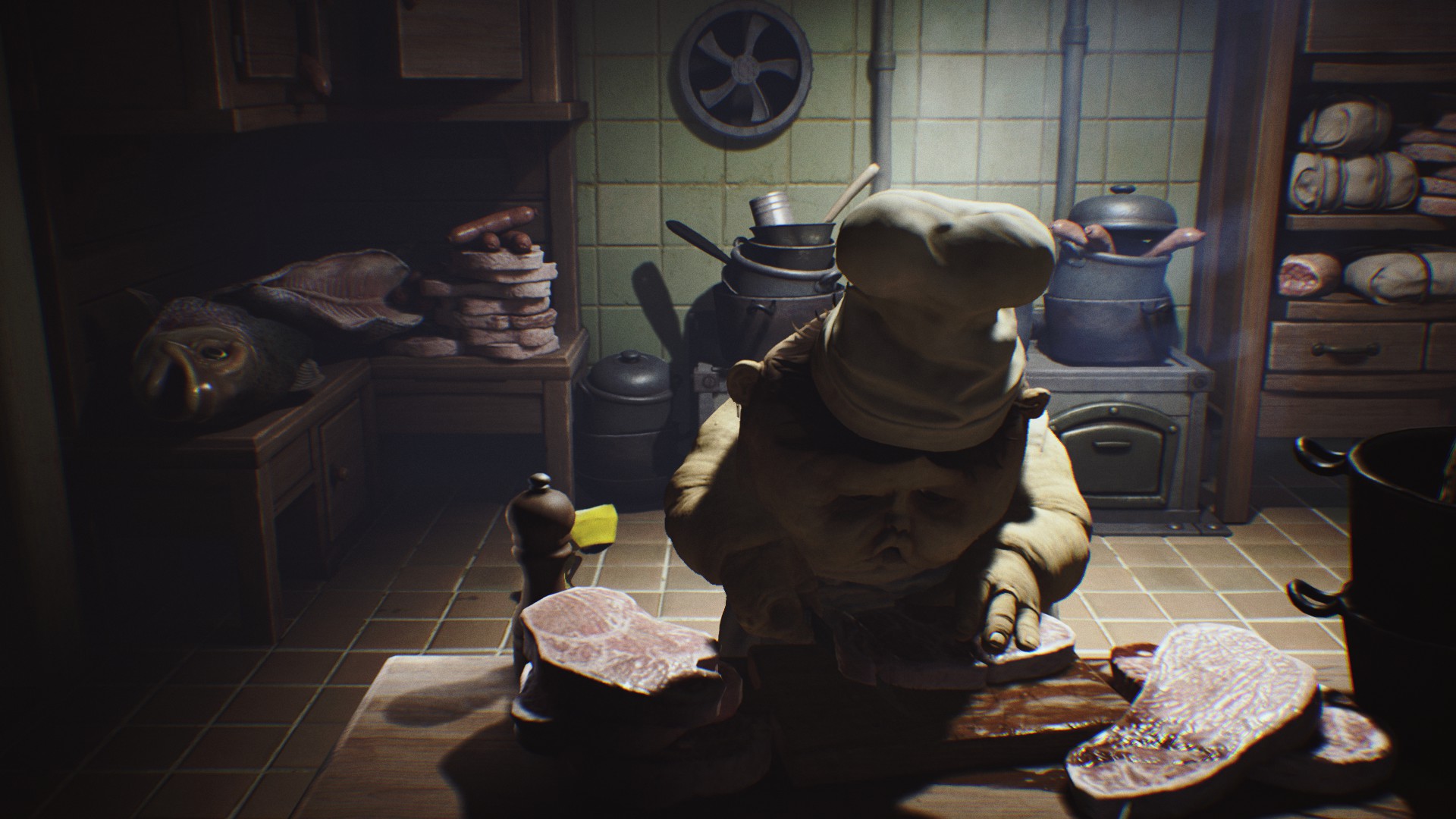
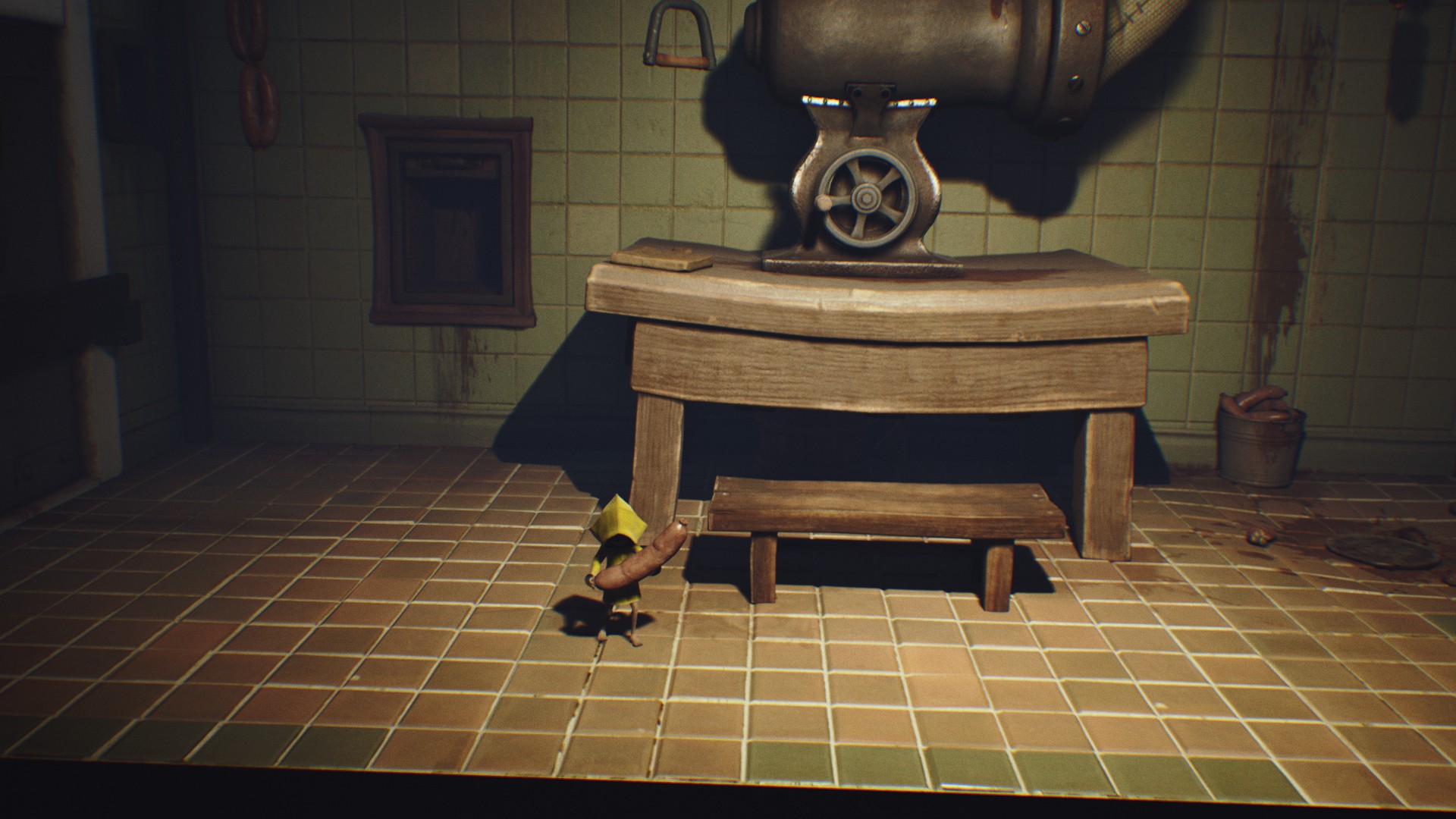
An okay platformer but a deeply imaginative horror game, Little Nightmares is worth playing for its array of disturbing imagery.
